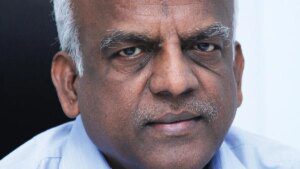WHO’S TALKING: Parque da Cidade, the main venue for the COP30 summit in Belem, Para state, Brazil | Photo Credit: Dado Galdieri
Finance has long been a sticking point in climate negotiations, with developing nations demanding fair, predictable, and accessible funds to support their transition. And yet, despite assurances, actual flows remain far below the trillions needed annually for mitigation and adaptation.
Host with green flex
As the Global North continues to cast a shadow of uncertainty over climate finance, this year’sCOPpresents a crucial opening for emerging powers — India, Brazil and China — to assume climate leadership owing to their size, ambition and geopolitical advantages.
This new constellation has its own set of strengths — proven track record of meeting emission pledges, taking the lead in expanding non-fossil fuel sources, framing just climate policies, and providing sustainable solutions and market mechanisms.
These attributes position this triad to become the torch bearers when the world deliberates on the model of transition countries should adopt to accelerate their shift toward cleaner, greener energy systems.
Brazil enters COP30 as the host and a leading tropical forest nation that has made significant strides in reducing deforestation.
Under President Lula da Silva, Brazil has repositioned itself as a climate mediator and forest finance innovator, with the Tropical Forests Forever Facility — a proposed long-term finance mechanism to reward forest nations for conservation — being a good example.
It has pledged to reduce greenhouse gas emissions by 59-67 per cent by 2035, compared with 2005 levels. This is higher than its previous commitment of 37 per cent reduction by 2025, and 43 per cent by 2030.
Renewable sources supplied 88.2 per cent of Brazil’s electricity demand in 2024, with wind and solar covering 24 per cent.
Pluralistic push
India, on the other hand, offers a balanced and democratic model of green development. More plural and federal in nature, the model resonates with other emerging economies of not only Asia but also Africa and Latin America. It adopts a bottom-up approach, where the central government provides the framework, and the planning and action are led at the State level — tailored to regional requirements.
It represents billions in the global South who seek prosperity without following the carbon-heavy path of the North, while its domestic policies, renewable achievements, and initiatives like the International Solar Alliance and the Coalition for Disaster Resilient Infrastructure give it genuine legitimacy. India is one of the few countries that are on track to meeting Nationally Determined Contributions (NDC) targets, having already met its emission intensity goals and 50 per cent of the non-fossil fuel installed energy capacity (220.1 GW as of March 2025) target of 500 GW by 2030.
Additionally, India is likely to become the global production hub of clean fuels, thanks to ambitious projects like the National Green Hydrogen Mission. Its forest and tree cover has increased to 25.17 per cent in 2023 while its NDC already commits to creating an additional carbon sink of 2.5-3 billion tonnes carbon dioxide equivalent by 2030. In this scenario, a bold Indian NDC is likely to fill the global leadership vacuum. At the same time, India’s progress in renewables gives it an edge as nations grapple with fossil-fuel volatility.
Clean export power
China’s State-led model of transition, meanwhile, remains impressive in scale. China has announced a 7-10 per cent targeted cut in its greenhouse gas emissions by 2035, compared to “peak” levels.
The pace of cleantech investment remains significantly fast in China, with wind and solar under construction doubling against the rest of the world put together last year. The country is similarly advancing at break-neck speed in supplying the world with renewable technology — be it wind turbines or photovoltaic cells and electric vehicles.
The three nations must now aspire to forge new mechanisms that shift burden-sharing paradigms.
The UN’s latest adaptation gap report says developing nations need more than $310 billion annually between now and 2035 to prepare for the impacts of climate change. By highlighting smart solutions, these three economies can vigorously push richer nations to fulfil their climate finance obligations.
They can offer tailor-made solutions that satisfy the developing-country imperative of equity and justice. Given the prevailing trade tensions and supply-chain challenges, these countries can turn clean-tech manufacturing, renewable exports, green hydrogen and nature-carbon markets into strategic assets for other emerging economies to follow and ensure that the COP process remains relevant.
(The writer is Director, Climate Trends, a research-based consultancy focusing on climate issues)
More Like This
Published on November 10, 2025










